By Richard Beranty
In an effort to calm his nerves just before he jumped into Normandy on D-Day, Lud Labutka thought it might be a good idea to accept the drink being offered from the paratrooper sitting across from him on their C-47 transport as it crossed the English Channel. It didn’t matter to him at the time whether it came from a bottle of blended Scotch or from a bottle of after-shave lotion. Labutka was simply looking for a little kick to help him get over the anxiety he felt about jumping from an airplane into Nazi-occupied Europe.
“There was a guy on our plane named Albert Jones,” Labutka says. “He looked over at me and said, ‘Lud, do you want a drink?’ I said, ‘What?’ He said, ‘Do you want a drink?’ I still didn’t think he had anything to drink until he pulled out a big bottle of Aqua Velva. I said, ‘You’re crazy!’ He opened it and sucked down a drink. I said to him, ‘Jones, if you’re crazy, I’m crazy, too.’ This was 20 minutes before we jumped! So I took a big drink. When I jumped into Normandy, I was heaving. I was puking on the Germans. That stuff made me sick.”
History has failed to record whether Labutka’s stomach contents had any effect on enemy troops; what is certain, however, is that never again would he consider drinking after-shave for a quick buzz, just as jumping from an airplane had never crossed his mind in 1939 when he joined the Pennsylvania National Guard as a 17-year-old high school graduate. Even to this day, more than 60 years after the war, a fear of heights has kept his feet planted on the ground.
“I wouldn’t even go on the Ferris wheel at a fair,” he says. “I still haven’t been on one. I’m afraid of heights.”
If that is the case, then how does this retired factory worker from Ford City, Pennsylvania, explain his wartime experience as a Screaming Eagle with the U.S. 101st Airborne Division, duty that not only took him into the night skies of France but also into Holland during Operation Market-Garden? It is because someone, at some point, questioned whether he had the intestinal fortitude to jump from an airplane. In other words, it was the result of a dare.
From Fort Benning to England
“In 1942 the Army was taking transfers into the Air Cadets,” Labutka says. “We were kids, just 18-, 19-, 20-year-olds. Somebody mentioned Airborne and I said, ‘Airborne? Are you crazy? I’m not going to jump out of an airplane.’ So somebody called me chicken. That’s all it took. I was going. We all figured that we’d make a difference, so three of us—Rich Dinger, Joe Miklos, and myself—went to see the first sergeant of our National Guard company and told him to transfer us to the Airborne.”
Labutka entered training on October 19, 1942, at Fort Benning, Georgia, where troops were hooked onto guide wires and slid to the ground from 40-foot towers. “Scary” training is what he calls it. This progressed to actual jumps from an airplane, five of which were required to qualify for Airborne duty.
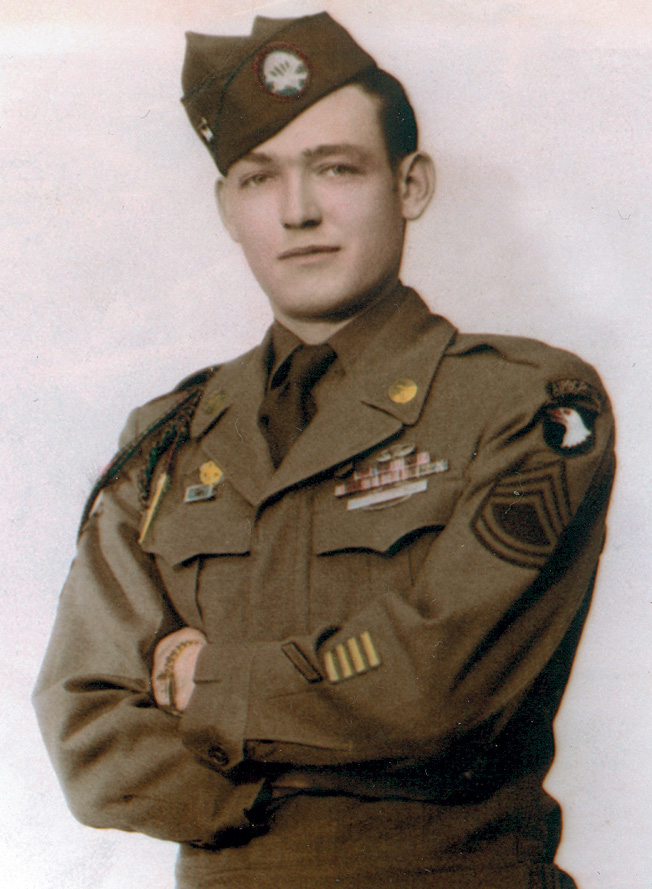
“The first time I was up in an airplane I jumped. Back then we packed our own parachutes. At that time they were round, really huge things. Then, after jump school, riggers packed them. Every time I jumped I always wondered if the riggers had placed that little rubber band where it was supposed to be. It held the end of the parachute to the static line.”
Labutka left Benning for the rigors of Fort Bragg, North Carolina, the new home of the 101st, where its men trained by making more practice jumps, often in front of such dignitaries as Army Chief of Staff General George C. Marshall. They also endured 25-mile forced marches without canteens, running the last mile back to camp in cadence.
“At first during these marches, the route took us through a creek and some of us didn’t mind scooping up a handful of water to drink. But after about three days of this our sergeant caught on and we were punished. We were made to do push-ups.”
Labutka was assigned to the division’s 502nd Parachute Infantry Regiment (referred to as the “Five-O-Two”), 2nd Battalion, Company E, 1st Platoon, which left for Europe on September 5, 1943, in a convoy from Camp Shanks, New York, aboard an aging British transport. The ship encountered engine trouble six days out, left the group, and put in at the small Newfoundland harbor of St. John’s, where repairs were made. But as the ship headed to sea once again, it scraped bottom, forcing it back to port. Arrangements were then made for the troops to make their Atlantic crossing on the SS Ericsson, which left in another convoy and arrived at Liverpool on October 19. It took Labutka 44 days to reach England on a voyage usually made in a week.
“The convoy we joined contained Company C of my old National Guard outfit,” he says. “By then they were the 28th Division. I didn’t know it at the time, but I went overseas with my old buddies from Company C of the National Guard.”
Once on British soil, men of the 502 lived in tent cities at Denford Lodge near Hungerford where they made more practice jumps in preparation for their assigned role on D-Day. Since the division had no battle history up to that point and its men were an untested force, it seemed to the other GIs stationed in England that these so-called “Screaming Eagles” were a group of overpaid and overly cocky servicemen. They appeared more famous for their fancy jump boots than for anything else. All of that changed, however, when they jumped from their C-47 transports in the predawn darkness of Normandy, fulfilling what General William C. Lee, the division’s first commanding general, described as their “rendezvous with destiny.” Four objectives were assigned the 101st in Operation Overlord, the invasion of the European continent: The paratroopers were first to secure the roadway leading from Utah Beach where the U.S. 4th Division was to land; second, they were to eliminate a battery of large German guns that threatened that beach; third, they were to establish contact with the 4th Division as it headed inland; and fourth, with those missions accomplished, they were to attack and occupy the French town of Carentan, an important road junction leading to the Cotentin Peninsula and the port of Cherbourg. Labutka’s 2nd Battalion was part of the force charged with eliminating the four-gun battery of 122mm howitzers at St. Martin de Varreville, two kilometers west of Utah Beach. General Omar Bradley, U.S. ground commander, called the guns a danger to the invasion forces and insisted they be eliminated.
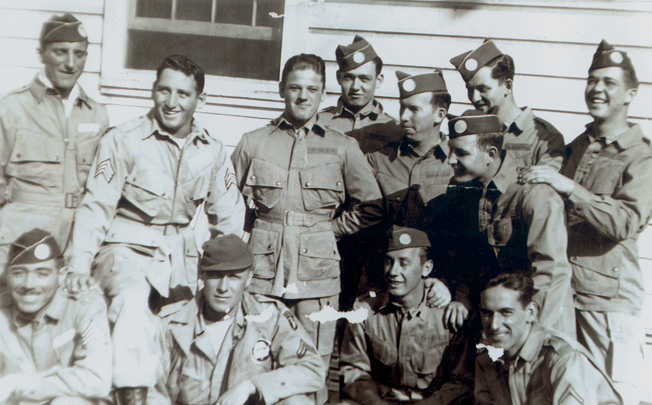
Another anticipated danger for the D-Day invaders, this one limited to Airborne troops only, was the ability to recognize friend or foe in the Normandy darkness. Brig. Gen. Maxwell D. Taylor, who had assumed command of the 101st in March 1944, solved this dilemma by introducing one of the most ingenious tools used in the invasion: the cricket. Basically a kid’s toy, similar to those sold in five-and-tens at the time, it proved extremely helpful for paratroopers to identify one another in the dark. The toy clicked when the tab on its back was pressed and released. One push asked, “Who’s there?” Two presses in reply meant “Friend.” A last-minute idea of Taylor’s, the crickets arrived about four days before the invasion.
The Jump Into Normandy
By late May the 101st was moved into new tent cities near the airfields from which the men would fly to assault German positions in France. On June 5 at about 5:30 PM, they ate their last preinvasion meal, consisting of pork chops and mashed potatoes, and returned to their assembly areas to take on their gear. Labutka says it included an M-1 rifle with eight or 10 clips of ammunition, six grenades, two canteens, two parachutes, flares, a medical kit, compass, and enough C-rations for three days. All told, their equipment weighed about 70 pounds. As evening drew on, Labutka’s platoon leader, 1st Lt. Wallace C. Strobel, called his men away from their packing for some last-minute instructions. As they gathered outside their tents, General Dwight D. Eisenhower, the Allied supreme commander, paid them a visit. A photograph was taken of this encounter and it became one of the most famous of the invasion. In it, Eisenhower is standing on the left talking to Strobel. The two are shown in an apparent conversation about the invasion. When asked years later about what was said, Strobel, who died in 1999, recalled that, in part, it went like this: “Where are you from, lieutenant?” Eisenhower asked. “Michigan, sir,” replied Strobel. “Michigan, eh?” Eisenhower commented. “Good fishing in that country.”
Labutka, standing behind several other men and unseen in the photo, says he never heard the conversation.
“We heard earlier that Ike might come by and wish us luck,” he says. “But I have no idea what he said to Lieutenant Strobel. I wasn’t close enough. Believe me, if I had known they were going to take a picture, I would have gotten my mug in it somehow.”
The men entered their C-47s at around 9 PM through the aircraft’s rear door, which stayed open for the entire flight. They moved in single file with the first man headed to the front of the plane. The 16 paratroopers took their seats, located on both sides of the aircraft, facing one another. Along the ceiling of the plane’s compartment stretched the static lines to which their parachutes were hooked just prior to the jump. The pilots were told to fly in a “V” formation of three planes each at an altitude of 500 feet to avoid German radar detection over the English Channel. Once they crossed the coast of France, the planes were to climb to 1,500 feet and then descend to 400 feet for the jump. Pilots were instructed not to veer from their assigned flight paths. The distance to their drop zone was 136 miles, and it took about an hour to reach it.
“We knew that it was about a hundred miles from where we were in England to where we were going,” Labutka says. “We were told to take out these guns. They didn’t tell us why, just that we had to take them out.”
The flight was uneventful until they reached the French coast and German guns began firing. Since Labutka and others of 2nd Battalion were in some of the first planes of the assault, they reached France relatively unscathed.
“Once we got over Cherbourg you could see the enemy shooting at us,” Labutka says. “It looked like the tracer bullets were coming out of a barrel. We could hear them hitting the wings going ‘knick, knick, knick.’ I was scared.” That was when Labutka took the healthy swallow of Aqua Velva. With his stomach now churning, the C-47, piloted by men of the 438th Troop Carrier Group, neared its drop point and a red light flashed, telling the paratroopers that their jump time was near. It was shortly after midnight when a sergeant yelled, “Stand up and hook up!” Moments later a green light flashed and Labutka was the sixth or seventh man to leave the plane.
“The sergeant hit the first guy on the ass and said, ‘Go!’ We were lined up tight, right against each other,” Labutka explains. “We were taught to count, ‘One thousand, two thousand’ when we jumped. If we got to the third count and the ’chute didn’t open, we were to pull the reserve parachute. That one was on our belly. The only thing I remember thinking when I jumped was, ‘I hope I land.’”
He did land, near the town of St. Marie du Mont just north of Carentan and south of the guns his battalion was ordered to destroy. “I landed in a farm courtyard, all brick and all fenced in, right beside a hay wagon,” he says.
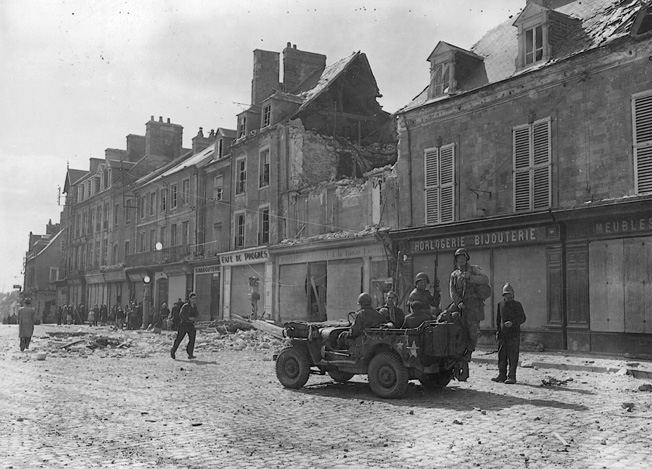
“The machine gunner landed in one corner of the courtyard. His name was Dempsey, from Rome, Georgia. In the other corner was Golembeski, the assistant machine gunner, from Pennsylvania. They both came over to me and said, ‘Lud, what are we going to do?’ Here, both of them were Pfcs and I was just a private, their ammo carrier, and they’re asking me what to do! So I said to find a door so we could get out of this courtyard. The night was very dark. We found a door, or a gate, and went out and bumped into a guy here and a guy there until there were six of us. We walked around, snuck around, crawled around. We didn’t meet anybody else. None of us fired a shot. Finally, when it was just getting light, about 5:30, we were walking around this hedgerow and saw a road.
“We crouched down because we heard people walking and talking,” Labutka continues. “These guys with me said, ‘Lud!’ And I said, ‘Shhhh!’ I had my clicker and when the noise got near I went ‘click-click’ with the cricket. Boy, the nicest sound that I ever heard came back: ‘click-click, click-click.’ So we jumped out on the road. I’d say there were about 60 people there including a lieutenant colonel, a lieutenant, and a couple of sergeants, and we joined them.”
Others in the drop were not so lucky, particularly those who came after the first wave. As the surprised Germans grasped the scope of the situation, these later planes received heavy doses of antiaircraft fire. Some pilots took evasive action, broke formation, and went off course. Paratroopers were scattered around the countryside. Many landed in swamps, rivers, and flooded fields. Others found themselves stuck in trees or in the middle of minefields. Some planes took direct hits and crash-landed or burst into flames before impact. Because of the ground fire and confusion, the drop zone resembled a rectangle of about 25 miles by 15 miles. Scattered troops sought each other throughout the day and into the next.
Taking Out the German Guns
The gun emplacements at Varreville did not pose a problem when Labutka saw them on June 6. They had been destroyed by Allied bombings just prior to D-Day and were void of German troops. It was there that Labutka met his battalion commander, Colonel Steve Chappuis, whose drop put him close to the guns.
“I’m glad we had the Air Corps,” states Labutka. “They knocked out a bunch of German guns. When I saw Colonel Chappuis, he was sitting cross-legged on this cement curb. He said, ‘Well, it looks like the Air Force took care of the guns.’”
With that threat neutralized, the gathered troops of 2nd Battalion moved toward the road leading south from Utah Beach. Securing it was the primary responsibility of Lt. Col. Robert G. Cole’s 3rd Battalion. By 1 PM on D-Day, Cole and his men had made contact with elements of the U.S. 4th Division coming inland from the beach, and the paratroopers found their numbers increasing. Throughout June 6-7, those scattered in the drop linked up into larger fighting groups. The massed paratroopers set their sights to the south and the division’s final objective, the town of Carentan.
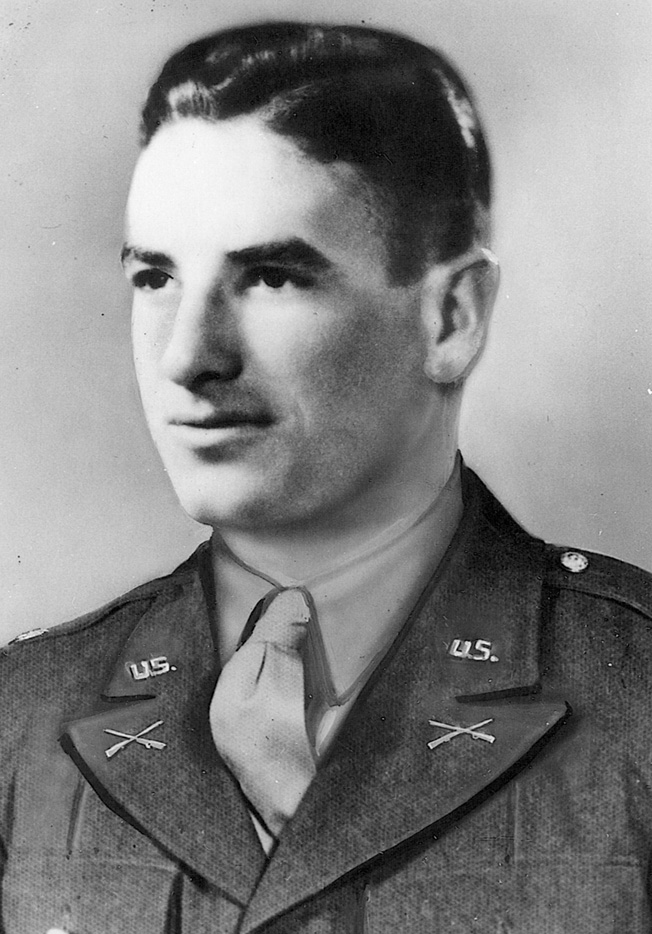
“I don’t think we really got together with any sizable force until about a day and a half after we landed,” Labutka says, estimating that they then numbered about two regiments strong. “None of us had gotten any sleep, unless we slept standing up. It’s hard to believe, but we did sleep standing up.”
Carentan was a high-priority target assigned to the 101st because its main highway and railroad connected Cherbourg to St. Lô, and ultimately Paris. If American forces did not take the town, it could be used as a corridor for a counterattack against Utah Beach. Army intelligence estimated the size of the German garrison there at a battalion. As it turned out, the enemy was apparently more plentiful and extremely stubborn. The division’s route of attack was down a causeway that ran through flooded fields and swamps. Labutka remembers that paratroopers called it “Purple Heart Lane,” for obvious reasons. The 502’s 3rd Battalion was assigned the lead.
“The first time I really heard gunfire was going toward Carentan. The Germans had machine guns pointed right down this road going into the town. There were four bridges we had to cross and swamps were on both sides of us. As we fought our way down the road we had to run this way, run that way, run this way, kind of zigzag our way down it.”
It was here that Labutka first experienced the effects of the German 88mm gun, one of the most devastating artillery pieces used by either side during the war. He also encountered two Airborne buddies from home, and both were wounded.
“Once we started down this road I met Joe Miklos,” Labutka says. “He got hit from a bomb burst. There was shrapnel in his leg, and he was going back. After we crossed the second bridge, who do I see but Rich Dinger with a patch on his shoulder. He was hit pretty bad. He said, ‘Lud, don’t go down there. It’s hell down there.’ I said, ‘Dick, I have to. My company’s going down there.’ Dinger was eventually shipped home. Farther down the road I came across this poor soldier who was hit right above his ear. I could see the matter leaking out. He tried to talk to me. He wanted morphine. I asked him if he’d had any but he couldn’t answer. He was gone. He must have been from the 3rd Battalion, Dinger’s outfit, because they went in ahead of us.”
The German 88s were finally silenced, but not before the road’s second bridge was shattered to pieces. This kept supplies from being brought in and the wounded taken out. It also prevented any possibility of retreat. Regardless, the paratroopers advanced, crossed the third bridge, and ran into their stiffest resistance on the other side of the fourth bridge. It was a heavily defended farmhouse about 150 yards away. With Colonel Cole and men of 3rd Battalion still in the lead, intense fire from German machine guns, mortars, and artillery pinned them to the ground for an hour. Knowing his men were low on ammunition, Cole ordered an attack with fixed bayonets and personally led the charge over open ground, eventually flushing the enemy from their positions. A bridgehead was gained across the Douve River, and Cole earned the Medal of Honor, the division’s first award in Normandy. He would be killed by a sniper’s bullet in Holland just months later. “That Cole was a soldier,” Labutka offers. “I know Miklos didn’t like him much because he was too hard on the men. But he was a soldier through and through.”
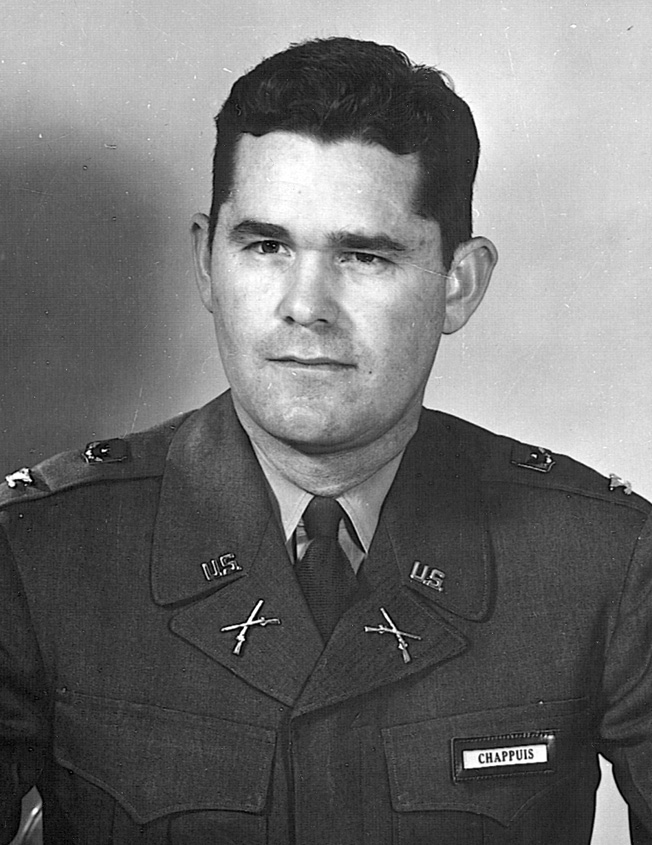
While division engineers worked to make bridge No. 2 passable, the badly depleted 3rd Battalion was replaced on the front by 2nd Battalion. More fierce fighting ensued. At one point the Germans counterattacked and some Americans thought the order was given for them to withdraw. It had not been, and reversing their rearward momentum was a challenge. The American line held, but a final German attack neared success once again until a five-minute barrage from division artillery stopped it. Afterward, the fighting diminished as glider troops from east of Carentan joined the fight.
“After that we got to the edge of this hedgerow and the guys in front of us must have had luck because the Germans backed off,” Labutka recalls. “We were involved in a lot of hedgerow fighting, a heck of a lot of it.”
The hedgerows in Normandy were an obstacle underestimated by the Allies. For centuries farmers had fenced their small fields with solid walls of dirt, often four feet high, and topped them with hedges whose tangled roots bound each row into a natural fortification. They were created to prevent erosion, but the Germans used them for lines of defense and counterattack. Many little battles were fought around the hedgerows. When attacking Americans approached one row, they found a strong force of defenders behind it and properly emplaced machine guns at both ends. If the enemy were dislodged or fell back, German troops behind another hedgerow went into action with mortars or artillery.
“Finally, we got in a line across this last hedgerow and went into Carentan. That’s when I saw dead Germans stacked like cordwood. Honest to God! We were shooting blind into the town, and when we got there, their bodies were stacked up just like logs. The Germans themselves must have stacked them that way. Somebody did.”
On June 12, Carentan was declared clear of the enemy, and the town was occupied. The final job for the 101st in Normandy was to maintain positions at the base of the Cotentin Peninsula. As June turned into July this area proved relatively quiet, manned largely by Allied patrols and inhabited mainly by wandering cows. “It was about a month after the landing before we had a chance to get off the line,” says Labutka. “We had no change of clothes and no showers during that time, but afterward we were eating steak. We’d kill a cow and cook it over a fire. We had steak for breakfast and steak for dinner.”
The 101st was relieved after 33 days of continuous combat, and moved by trucks to an area behind Utah Beach on July 10. The division history records that in little more than a month of combat, the 101st suffered 4,670 casualties. According to E Company historian Emmanuel Allain of Normandy, France, Labutka’s company of the 502 lost only three men during that time: one officer and two NCOs were killed in action.
The paratroopers were taken to England by landing craft from July 11-13 and returned to their old quarters north of London. At least one month of back pay awaited them, and leaves were approved. Labutka says most of the men who were given passes went to London to celebrate. “I went to London for booze and women. Don’t forget,” he says, “I was just a kid.”
The division was replenished and took part in further training over the next two months. More Airborne missions were proposed, but each time they were canceled due to the rapid Allied advance in France. But the good life in England didn’t last, as the 101st was slated to take part in a plan to liberate Holland and advance quickly into the Ruhr, the industrial heart of Germany. Dubbed Operation Market-Garden and developed by British Field Marshal Bernard Montgomery, it called for Airborne forces (the Market phase) to drop behind German lines and secure a hundred-mile corridor as British armored forces (the Garden phase) came up from Belgium to capture vital bridges over the lower Rhine River.
Strategically the plan failed. Eisenhower had been reluctant at first to support the mission, but eventually he relented. Bradley called it “the wrong plan at the wrong time in the wrong place.”
The three parachute regiments of the 101st had separate assignments in Holland. The 502 was charged with securing its landing zone near Eindhoven, capturing a bridge over the Dommel River, and attacking the village of Best to protect the lower section of the British thrust. The paratroopers were loaded with the same amount of equipment as in Normandy, and the September 17 daylight drop into Holland was picture perfect.
“It was nothing like Normandy; it went off like a practice jump. There was no opposition.” The only obstacle Labutka encountered in the jump was barbed wire, which gave him a cut above his right knee. The scar it caused has remained with him. “They wanted to give me a Purple Heart, but I turned them down. Why should I accept a medal for a scratch when guys around me were getting killed?”
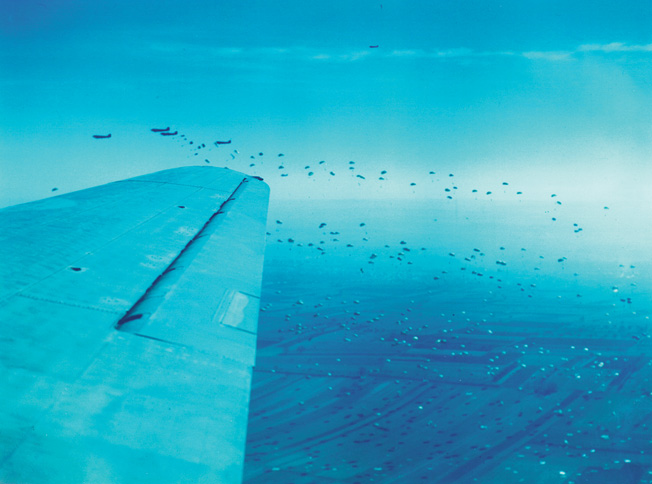
While the paratroopers had an uneventful flight from England and an easy drop, it was different for the division’s glider troops. Of the 70 gliders that took part, only about 50 made it to Holland intact. Some landed far behind German lines, some were hit by flak, and some were crashed upon landing by obstacles planted in the fields.
“The Germans had sticks, trees actually, buried in the ground every 10 feet, which ripped those gliders apart,” Labutka says. “Some of them contained jeeps and cannon and when they hit the poles there was equipment all over the place.”
Capturing Best
With the landing zone secured and the Dommel River crossed, the march on the bridge that crossed the Wilhelmina Canal at Best commenced. Just as intelligence reports of enemy troop strength at Carentan were in error, so it was there. The Germans who defended the area were thought to be of poor quality, and Allied planners anticipated that a platoon could handle the mission. When enemy defenses stiffened, a company was sent to help. Later, both 2nd and 3rd Battalions joined the attack. At one point, 2nd attacked with three companies in line across an open wheat field and took serious losses from artillery, mortars, and machine guns.
“Some of the guys near me were bunched up,” Labutka explains. “I even yelled at them to scatter. You’re never supposed to get close to the next guy. That’s what they taught us— don’t bunch up because that’s what the enemy is looking for. Then a mortar shell hit three of them. One guy was hit right in his lap. Another one of them was dying. He had me recite the Act of Contrition to him. He died right there in my arms.”
Another fatality was Colonel Cole of 3rd Battalion. After calling for air support, friendly fire began taking its toll on American troops, so Cole decided to place orange panels in front of the line to benefit Allied pilots. While he was doing so, an enemy sniper killed him with a shot to his temple. Cole died never knowing that he had been awarded the Medal of Honor for leading the bayonet charge at Carentan. When the battle for Best ended, nearly half of the 101st had been involved, along with a column of British tanks. The area had been defended by about a thousand enemy troops.
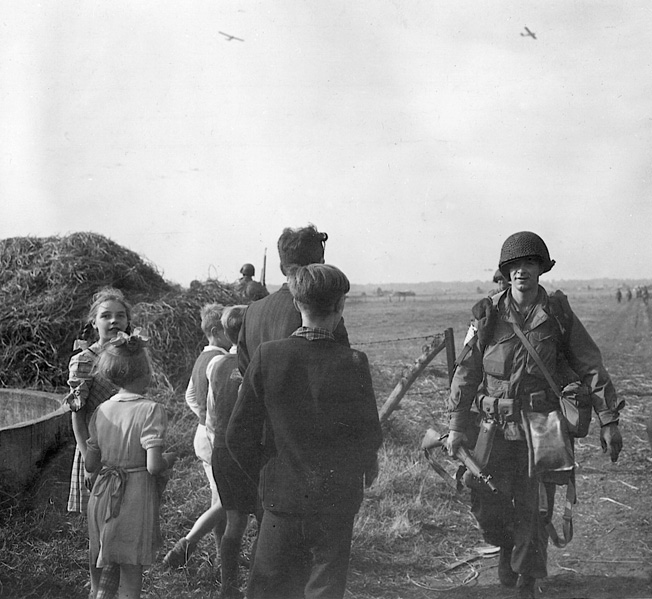
“We captured about 200 German soldiers at Best, kids and old men,” Labutka says. “They just threw down their guns. Two guys with bazookas were taking them back to the rear when somebody said, ‘OK, we’re moving.’ So I was walking behind this machine gunner and he threw his machine gun over his shoulder and must have pulled the trigger. There was one shell in it and it hit my helmet, put a nick in it, and boy did I hit the ground. I gave him hell. I said, ‘You’re supposed to clear your gun.’ He said, ‘I thought I did.’”
Moving Up the Ranks
After the fall of Best, the 502 was ordered to hold defensive positions in the area. Company E lost 18 men killed in action in the operation, 12 of whom had been with the outfit when they jumped into Normandy.
“Up to this time I was still a private,” Labutka says. “But shortly after Best I went, on one order, from private to Pfc to corporal to sergeant to staff sergeant to tech sergeant. Three up and two down. That’s how many guys got wounded or killed. In one order I went from private to platoon sergeant. I had 47 guys under me—three rifle squads and a mortar squad. That’s when I was issued a Thompson submachine gun.
“This one time in Holland,” he continues, “I was looking through my field glasses and saw Germans about a hundred yards away. They were squatted, with their pants down, so I radioed over to my mortar sergeant, Earl Rodd, and asked, ‘Do you see that?’ He said, ‘How about me going back and laying a couple of shells in there?’ I said, ‘That’s just what I want you to do when I let you know there are more Germans.’ So he went back and I was on the radio with him and about five or six more of them came down. I said, ‘Earl, lay a couple in there now.’ He did. They were all tree bursts, hitting these big fir trees. Those Germans scattered all over. You should have seen them run with their pants halfway up. I laughed. I think it was the first time I laughed like that since I’d gotten over there.”
It was also in Holland that Labutka had a chance encounter with the division’s artillery commander, Brig. Gen. Anthony C. McAuliffe, who later gained fame with his “Nuts” response to a German surrender order at Bastogne. After their Holland jump, the paratroopers were told to take off their jump boots and wear regular-issue combat boots so the Germans could not identify them as Airborne if they were captured.
“One day, this was also after Best, General McAuliffe, accompanied by my platoon leader, Bill Parks, was checking our company area. Lieutenant Parks called me over and General
McAuliffe said, ‘How are your men eating, sergeant?’ And we had just passed third platoon, and they had a pig on a spit. I said, ‘We’re eating well, sir.’ He said, ‘So I guess you are.’ And then he asked me, ‘How do you like your combat boots?’ I said, ‘I hate them, sir.’ He said, ‘You do know why we can’t wear jump boots?’ I said, ‘Sure, the enemy will know we’re paratroopers.’ He said, ‘That’s right, sergeant.’”
Whether German forces w ould have treated Airborne troops any differently from the regular infantry if they were captured, Labutka is not sure. But the switch of boots would be repeated again when the division was sent to Bastogne.
Breakthrough in the Ardennes
Since the main objective of Market-Garden, an advance into the Ruhr, never materialized, the operation failed. However, the Allies did drive 65 miles through German lines, crossed two major rivers, seized airfield sites, and created a buffer to protect the port of Antwerp. By mid-November, after 72 days of combat, the 101st was moved to its base at Camp Mourmelon, a one-time airfield in France, where paratroopers received passes to Paris, enjoyed good food and champagne, and experienced frequent USO performances.
“Bob Hope came one time. But that wasn’t my cup of tea. I never went to a movie or saw a show,” smiles Labutka. “I was busy drinking and playing poker. I had to be the unluckiest poker player in the world. Maybe I drank too much when I played. But what else was there to do? There were no women around.”
Once again the good times were about to end as German forces opened their last offensive in Western Europe through the Ardennes Forest in Belgium. Their attack, launched on December 16, 1944, rolled through the sparsely held line of either inexperienced or battle-weary American troops. The 101st was soon in the center of the action during what has come to be known as the Battle of the Bulge.
“I was AWOL in Paris when they attacked,” Labutka says. “I had a pass, but it was overextended. You see, me and my first sergeant were close. He gave me a pass whenever I wanted one. All I had to do was sign somebody’s name to it and show it to the bus driver. He didn’t know one lieutenant from another. It was easy. So me and a buddy were in Paris. I think we’d been there four days and were planning to visit the Folies Bérgère, the famous nightclub. But before we got there we stopped at this little outside café drinking gin and orange juice. We never got to the nightclub because somebody rolled us. It was probably one of the girls we met.
“So without any money we went back to Rainbow Corner. This was a place in Paris where all the GIs went. A lieutenant came by and said, ‘Sergeant, I got bad news for you. Be at Rainbow Corner at 5 o’clock tomorrow morning.’ I asked, ‘What happened?’ He said, ‘Breakthrough.’ There were about two truck-loads of guys from our outfit in Paris and we went back to Mourmelon.”
The surprise German attack easily knifed through the American lines. Poor visibility grounded Allied planes, and over the next three days the situation worsened for the Americans. One option for Eisenhower was to commit his reserve units, one of which was the 101st. With its division commander in the United States and assistant commander in England, the job fell to General McAuliffe to lead the paratroopers into battle. But this time they did not drop from the air. They went on trucks and arrived in Bastogne, a key Belgian crossroads town, on December 19. This was the southern sector of the German thrust guarded in part by the tired U.S. 28th Division, which had been sent to that area for rest. The division had seen action since just after the Normandy landings, and more recently had been involved in the desperate fighting in the Hürtgen Forest. The 28th also contained men from Labutka’s hometown National Guard unit. As the Germans advanced, the 28th fell back and the 101st moved in.
“Going into Bastogne I was in charge of two trucks,” recalls Labutka. “That’s when I heard that the National Guard from Pennsylvania was there. I knew guys in Company D from Butler, and naturally I knew guys in Company C from Ford City. So here they were, the 28th Division, coming out of Bastogne while we were going in. One of the guys I knew I did see coming out, Pete Rhodes from Company C.”
Once in Bastogne, the 101st immediately set up a defensive perimeter in all four directions around the town, a radius of about 16 miles. The paratroopers were surrounded by German forces, and Labutka found himself on the northwest side of Bastogne during the worst winter in years, as nighttime temperatures frequently dropped below zero. When men touched a gun barrel, their skin stuck to it. Snow was as constant as the American patrols probing the German lines.
“We didn’t go too far out on patrols,” he recalls. “They just wanted to see how far [away] the Germans were. This one time we were on patrol and my radio operator, Jimmy Agnostis, was behind me. I was up the field a way, and I stopped because I thought I saw some German troops about 200 yards away. Then I heard this ‘pow-pow’ from behind me and damn if I wasn’t hit in my helmet again! I said, ‘Jimmy, you SOB! That’s twice I almost got killed with our own guns!’ He said, ‘I’m sorry, I’m sorry.’”
“The Battered Bastards of the Bastion of Bastogne”
The Germans underestimated American resolve to defend the town, and overestimated their own ability to take it. Four Germans approached U.S. lines south of Bastogne on December 22. One of them carried a white flag, and another held a message that proposed the Americans, since they were surrounded, should surrender. If the offer was rejected, the note promised that Bastogne would be destroyed by heavy guns. When the ultimatum reached McAuliffe, his first reaction was “Nuts.” That answer was eventually delivered, but the German envoy did not understand its meaning. The American officer in charge said through a translator: “If you don’t understand what ‘Nuts’ means in plain English, it’s the same as ‘Go to hell!’”
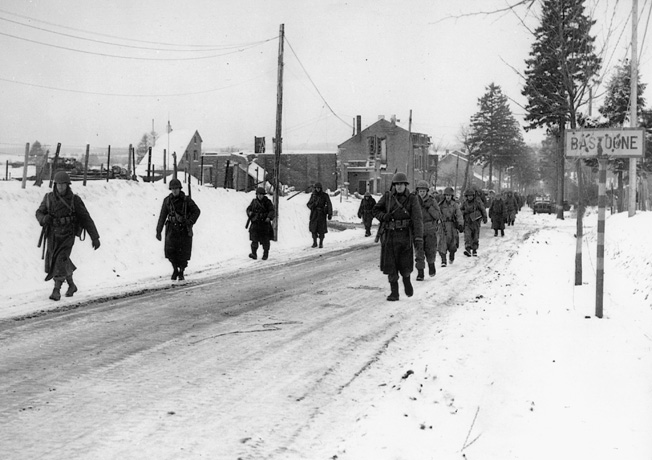
The German bulge in the American lines was reaching its high-water mark when the offensive began to run low on supplies and meet stiffer Allied resistance. By December 24, Hitler was said to be so incensed that such a small town could be such a big thorn in the German drive that he ordered Bastogne annihilated.
“The Germans did bring in tanks and shot 88s into our third platoon,” Labutka says. “They got hammered. For the most part, my platoon was in reserve. That’s why I didn’t get into contact with German tanks. But our third platoon from E Company took it bad.” E Company losses were 11 KIA, three of whom had jumped with the company on D-Day.
As Christmas Day neared, the visibility cleared enough for Allied planes, at times flying 250 sorties a day, to drop supplies to the beleaguered paratroopers who were now running low on everything. Most air drops reached American hands, although some landed too far away. Labutka remembers celebrating the holiday with an ice cream-like concoction made by putting snow in a canteen cup and adding lemonade powder from dropped C-rations.
“When those skies brightened and I heard those planes coming over to give us ammunition, food, everything we needed,” he says, “I thought that was the nicest Christmas present I ever got.”
A U.S. armored division finally arrived from the south on December 26 and pushed its way into Bastogne a few days later. This corridor was eventually widened, and on January 18, 1945, the 101st was poised to exit the town it had called home for a month.
“We marched out of Bastogne and got on trucks. Outside of town, somebody had put up this big sign: The Battered Bastards of the Bastion of Bastogne.”
A Stay in the House of Eva Braun
Now on trucks once again, the division was sent to Luxembourg and later to the Alsace region of France. Stationed there until mid-February, the paratroopers saw little action. Afterward, they returned by train to their camp at Mourmelon where, on March 16, the 101st became the first division in history to receive the Distinguished Unit Citation (now called the Presidential Unit Citation) as an entire division. General Taylor also addressed the men in Mourmelon, telling them that when the war in Europe was over the division would probably be sent to the Pacific to fight the Japanese. It did not go over well.
“He said that, if possible, we were going to Japan and finish off the Japs,” Labutka remembers. “We weren’t in the mood for that. Do you know what he heard? From the rear ranks: ‘Boo!’ Then louder: ‘Boo!’ Then finally from the entire division: ‘Boo!’ Can you imagine what that sounded like from a whole division?”
American forces by this time were well east of the Rhine River, and the 101st was ordered to Düsseldorf and then to southern Germany and finally to Bavaria, where Allied leaders expected diehard Nazis to put up their last fight. The division’s final assignment of the war was to capture Berchtesgaden where Hitler had maintained his mountain home. That was accomplished on May 5, and two days later radio reports told that the Germans had agreed to unconditional surrender. The next day it became official, and the war was over.
“We were billeted in a nice house in Kempton, just outside Berchtesgaden,” Labutka says. “At the time, people who owned the house could put their valuables in a room or on the third floor and lock it up. The house I was in belonged to Eva Braun, Hitler’s mistress. It had lots of big rooms, high ceilings, but little furniture because it was all locked up. So somebody from my platoon broke into one of the rooms and took a bunch of stuff, mostly jewelry. We had a meeting with the company commander the next day, and he said, ‘We’ll give you guys ’til Reveille to put everything back. If not, there’s going to be repercussions.’
“At 5:30 the next morning, nothing was returned. So the next day they made us go on a 25-mile forced march with a full pack—rifle, blanket, no water. They said we were going to do that every day until everything was put back. That night, after our march, the guys who took the jewelry put it all back. Three or four guys were involved. We knew who they were, and everybody wanted to beat them up. And they would have been beaten up if it had gone on any longer.”
“As a Unit We Never Lost a skirmish”
Labutka left Europe from the southern French port of Marseilles on September 6, 1945, and arrived Stateside eight days later. He was discharged on September 21.
“I wouldn’t take a million dollars to do it over again,” he says. “And you couldn’t give me a million dollars not to have gone through it. I’m glad I went through it. I was lucky. The Lord took care of me because I’m still here. But I know one thing. I would never jump from an airplane again, unless somebody called me a chicken.”
Perhaps the most fitting tribute a soldier can receive comes from the men who served with him. “Lud was a leader even before he became our platoon sergeant,” offers Tony Diarchangelo of suburban Philadelphia, who served in Labutka’s platoon through Normandy, Holland, and Bastogne. “He was one hell of a soldier, a great soldier, always calm, cool, and collected. As a unit we never lost a skirmish.”
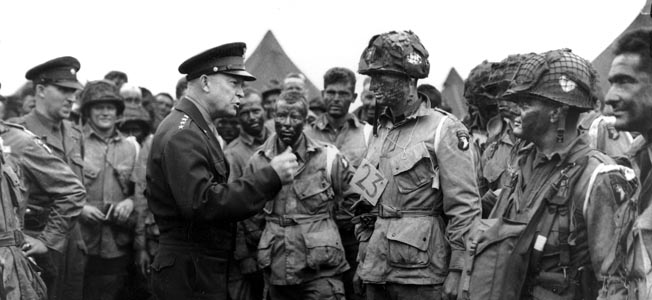

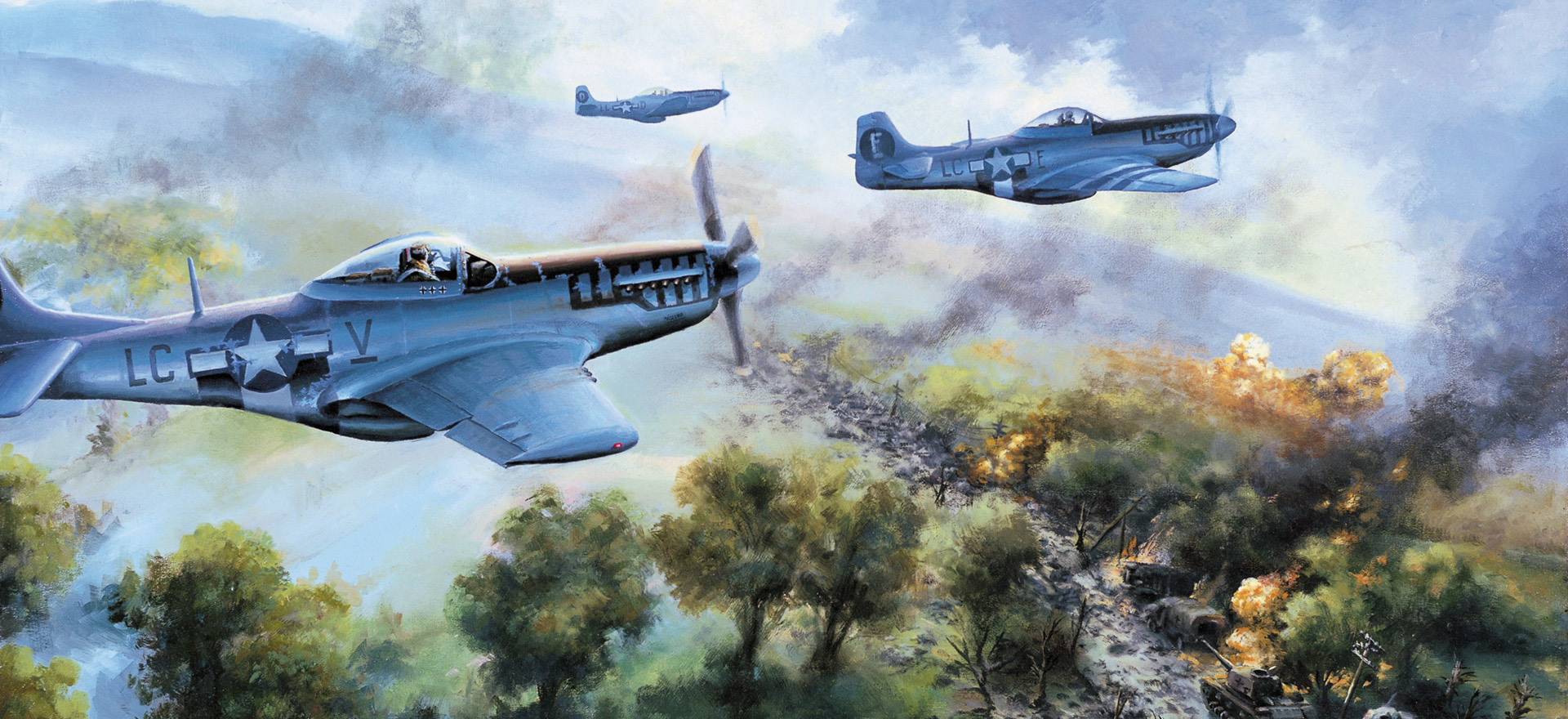
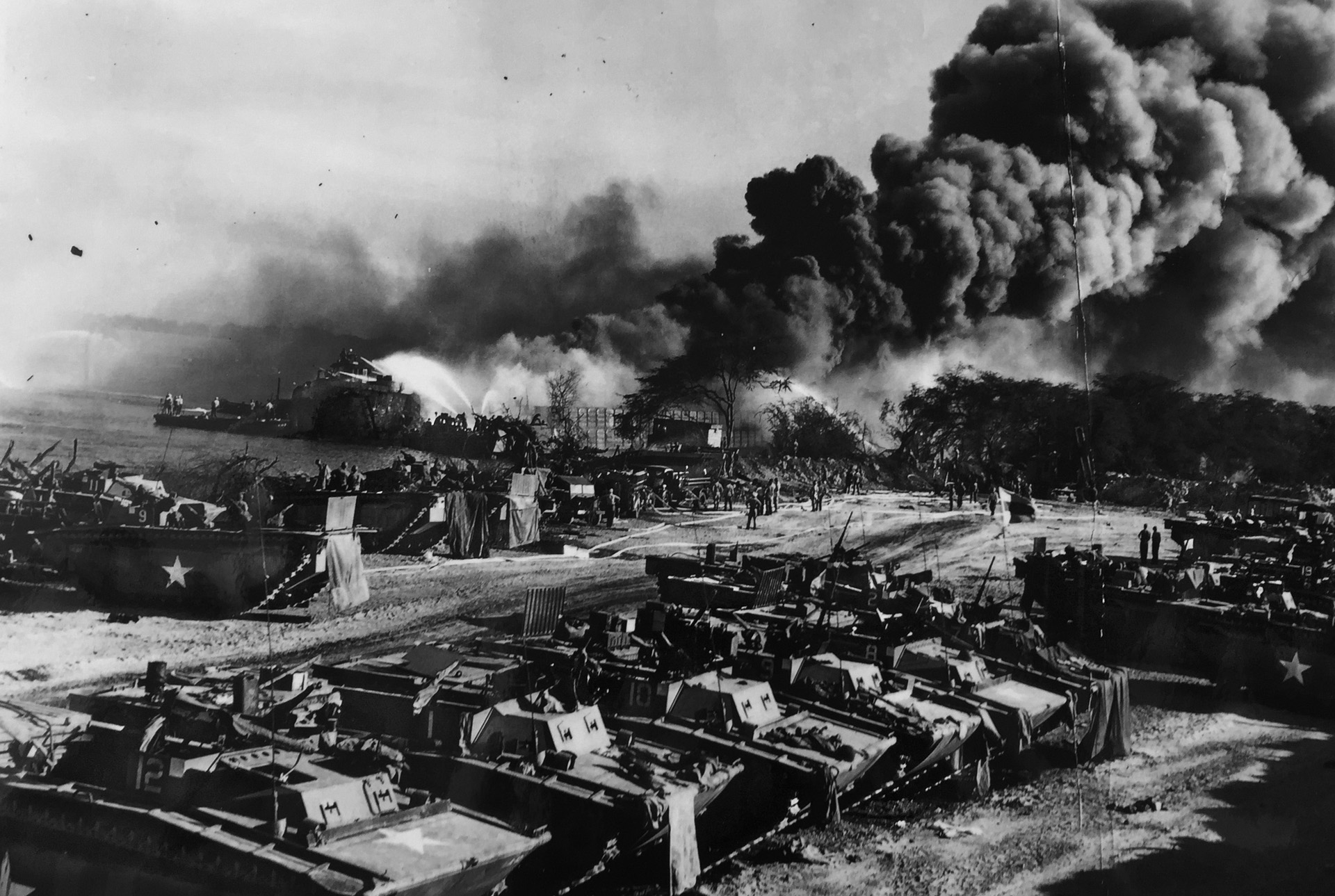
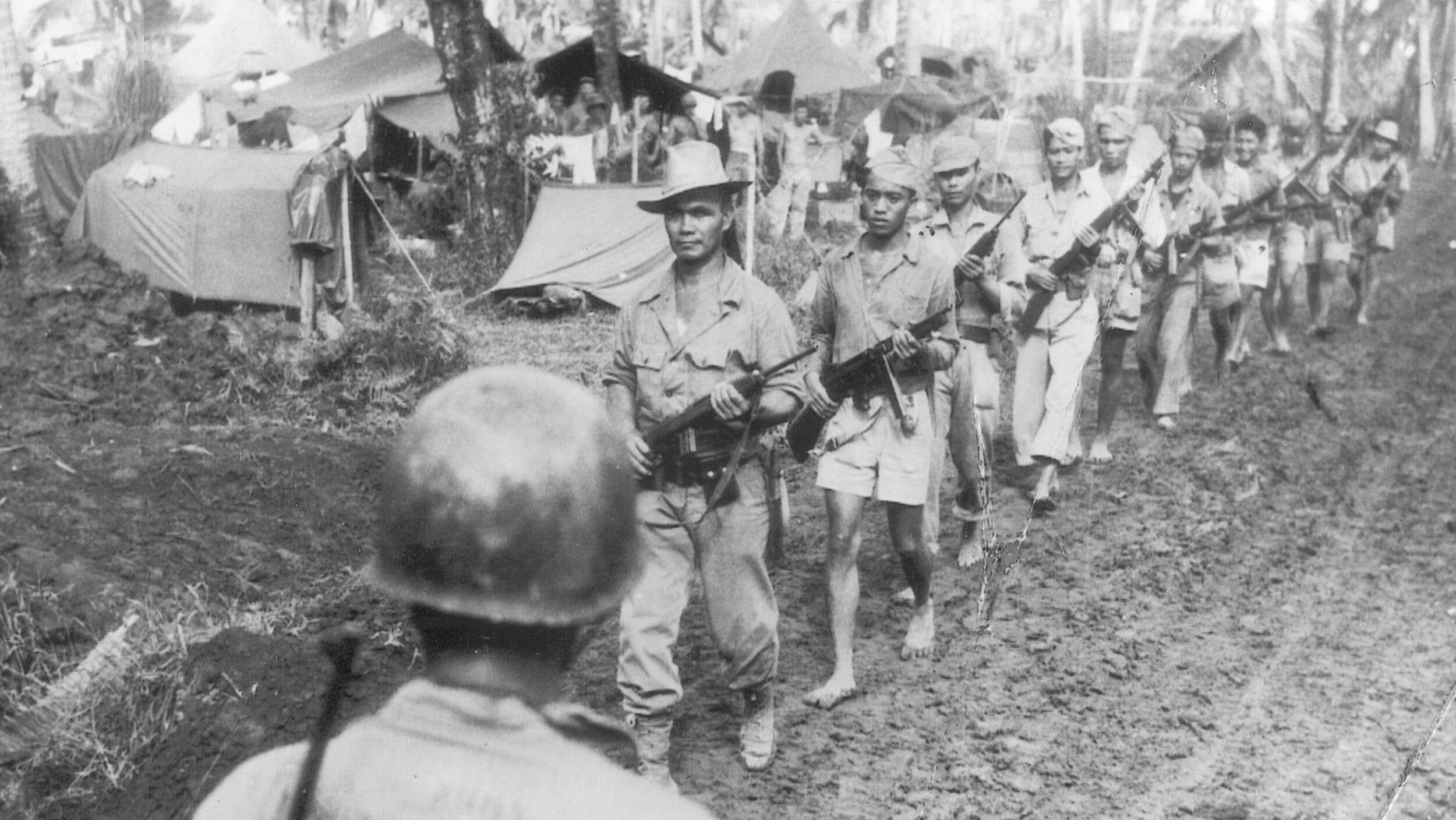
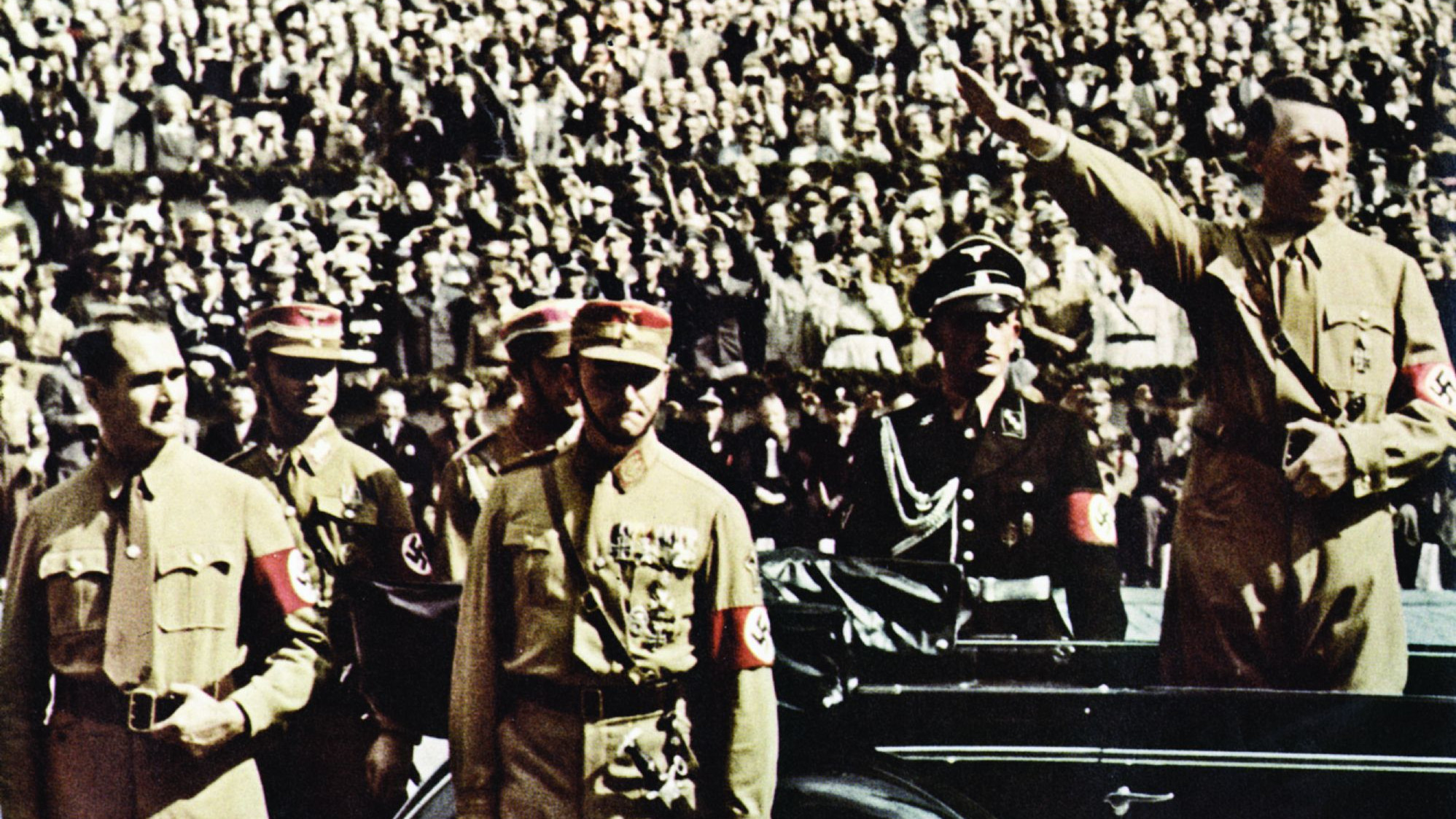
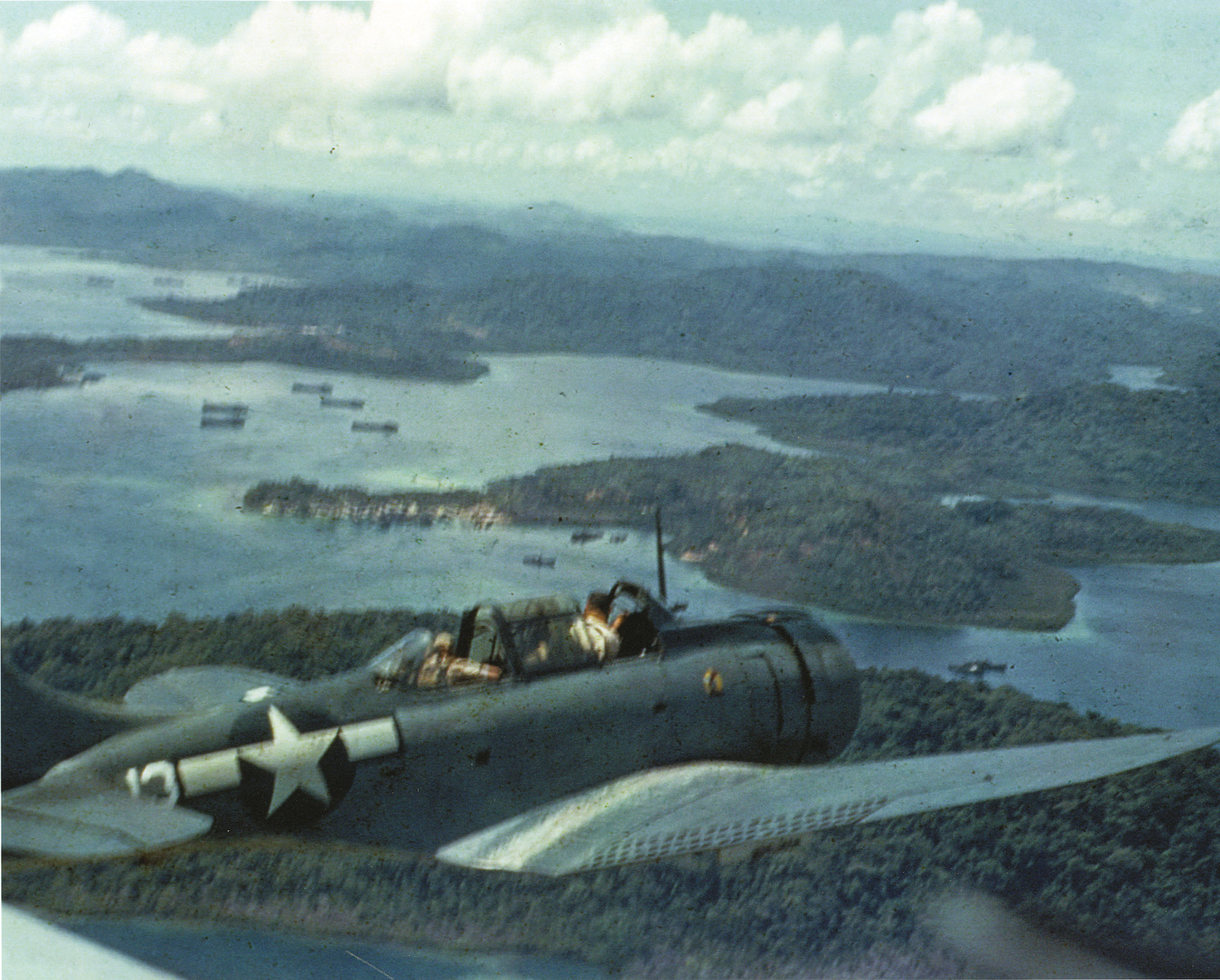
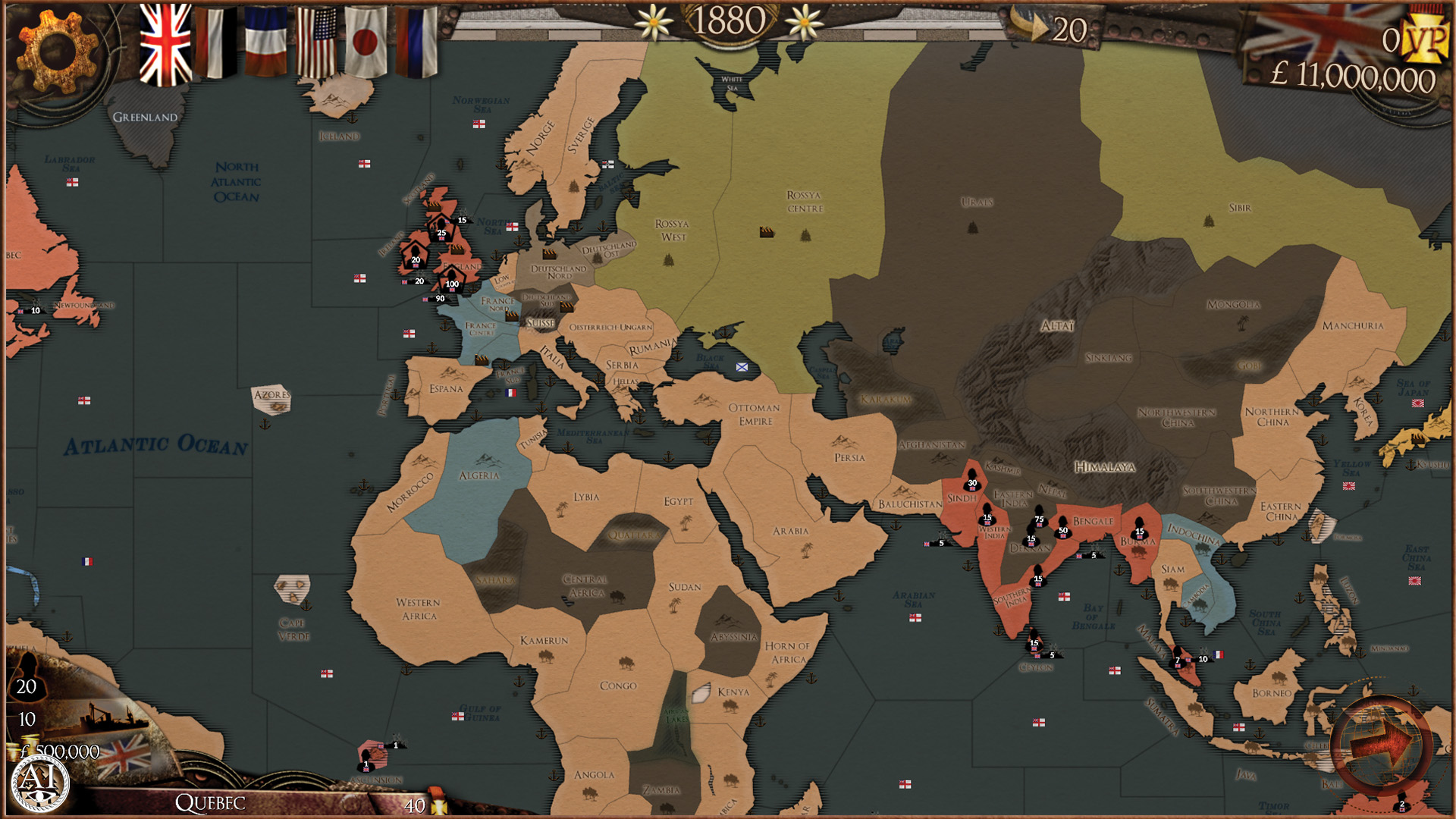
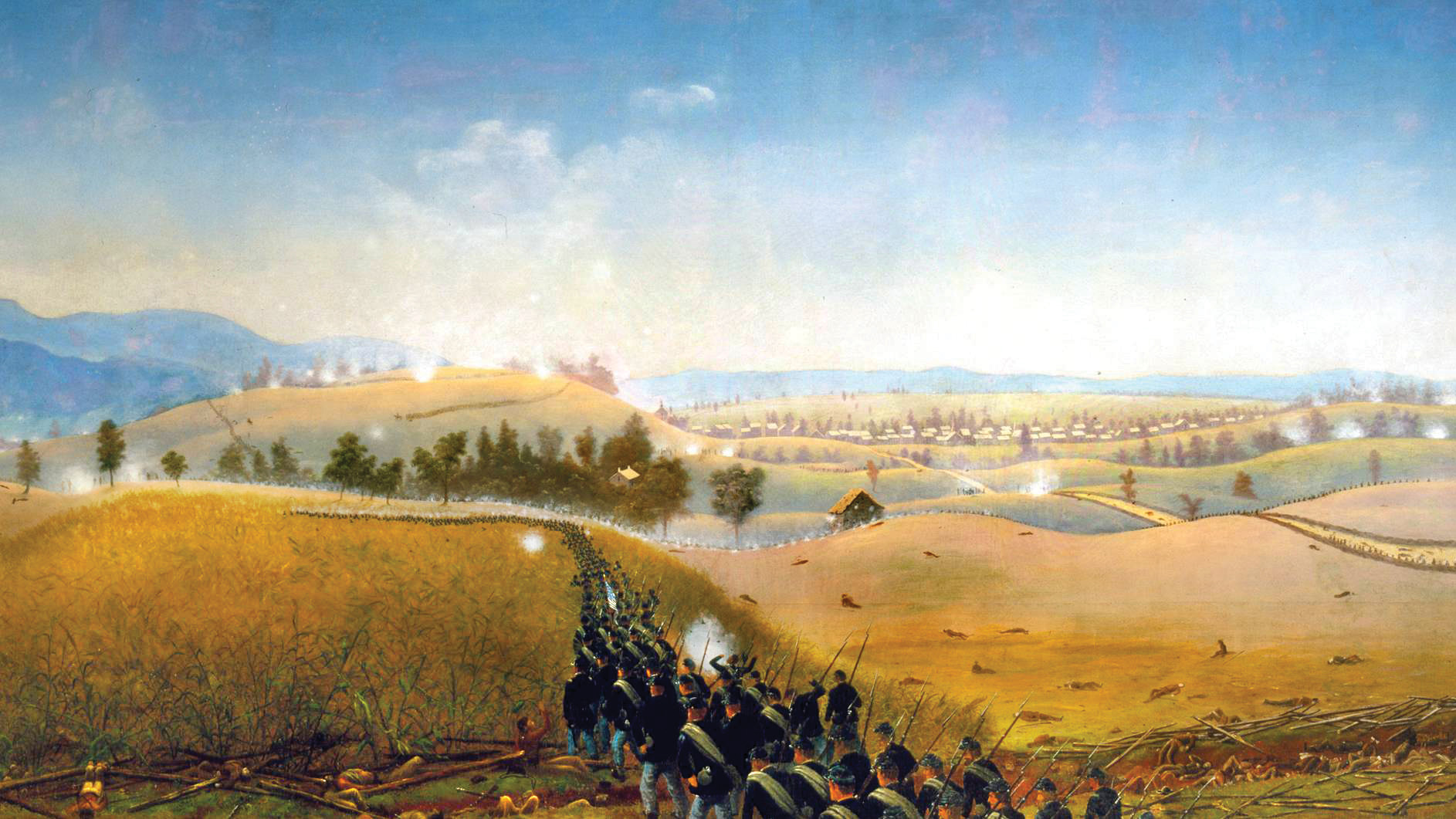
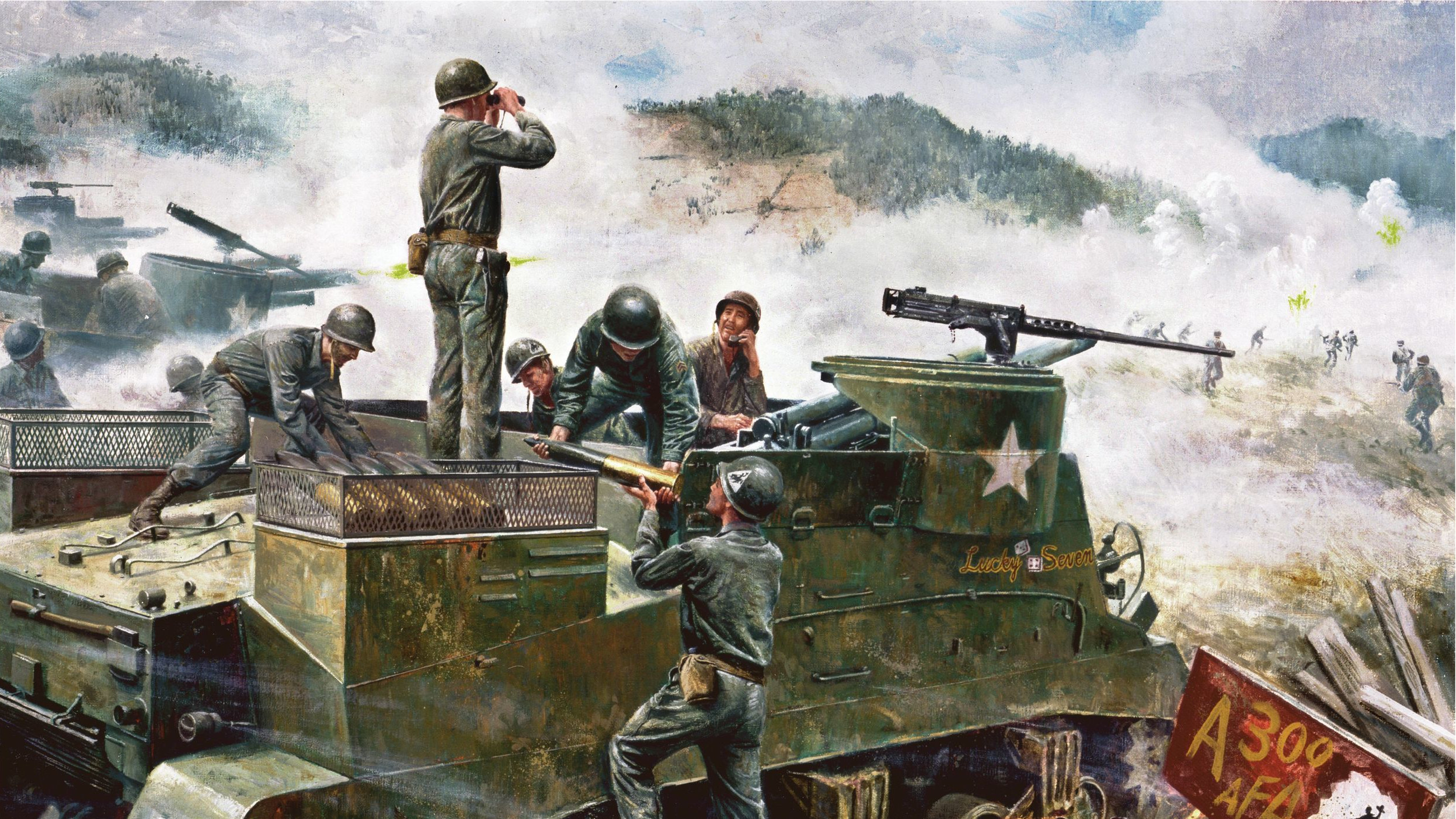
My cousin Lud, everyone in FC called him
Uncle Lud!!!
Great Guy & GREAT RELATIVE